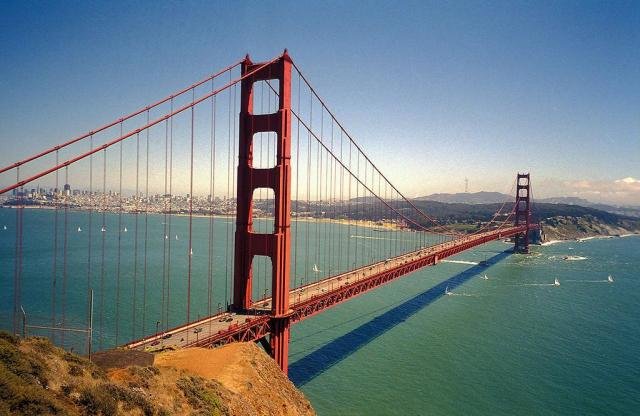An hour after sunrise, the docks bordering the Akashi Strait have been quiet however for the sound of marine site visitors. On this unique morning, but, an unexpected noise quickly broke the thick fog and introduced to the developing commotion: Scores of schoolchildren headed for the Shion Maru Ferry, discovered them on a 4-kilometer (2.Four- miles) have been waiting to be taken across the straits. Japan and Awaji, an island to the south.
Click here https://longests.com/
The May 11, 1955 area ride will offer students a more in-depth examine Awaji’s rural life-style, along with a fishing village and incense sticks export, a ways from its bustling surroundings in Hiroshima, Shimane, Ehime and Kochi Prefectures Looks like a international
A forty five-minute adventure via boat turned into the simplest way to attain the island, but required navigation of Japan’s busiest shipping lanes, with greater than 1,400 ships passing through each day. Just as keen hands grasped the deck railing and excited eyes seemed out for the remote shore, a parent emerged from the fog. With little warning, the Shun Maru collided with a shipment deliver.
Several passengers of the ferry had been thrown into the cold water and drowned. Within mins, Shion sank in conjunction with the Maru, nonetheless clinging to the list deck of the ferry. As rescue became to healing, a incredible demise toll emerged: 168 passengers, consisting of one hundred college kids, had died [source: Japan Times].
The sinking of the Shion Maru sparked tremendous public outrage, prompting progress on an extended-status concept: a motor car bridge to attach Akashi to Awaji Island, simply west of Kobe.
Let’s find some more interesting topics like these here longest suspension bridge
The Japanese authorities knew that the structure might need to be a suspension bridge. This kind of bridge capabilities a roadway suspended by way of cables striking from support towers and, substantially, requires only a few pillars to anchor it to the earth. This was an vital consideration, as the Akashi Strait bridge would span a busy transport lane. The six-lane suspension bridge become an inelegant, highly-priced and — about four kilometers (2.Four miles) lengthy — probably not possible solution [sources: Cooper, Curiosity Stimulated, National Geographic, PBS, Ryan, Osman].
Bridge That Ingenuity Built
At face value, building a suspension bridge to cross the Akashi Strait became a no-brainer. Not most effective would the bridge allow motor car traffic among Japan and neighboring Awaji Island for the primary time, but Awaji could no longer be the best major island separated from the Japanese mainland. Plus, a huge suspension bridge will function a testomony to Japanese engineering.
There became simply one hassle: the Akashi Strait turned into one of the worst places inside the international to construct a bridge. Some bridge builders desired to grasp this particular spot because of its strong currents, thick fog and common storms that sink loads of ships every yr. Typhoon winds regularly ripped thru the corridor at speeds in extra of 280 kilometers (one hundred eighty mi) according to hour. And if that wasn’t sufficient, the strait runs alongside a chief earthquake fault.
Oh, and there was one more nagging problem to don’t forget. No one had ever constructed a suspension bridge over such cavernous waters (the equal of the Akashic Strait to be a hundred and ten m – 360 ft deep) or over such an extended duration. At its longest point, the bridge would want to be suspended 1,991 meters (6,532 toes) to permit unobstructed access to the transport lanes. To put this in perspective, the main span of San Francisco’s Golden Gate Bridge is 1,280 meters (four,two hundred toes), approximately -thirds the duration [sources: Cooper, Golden Gate Bridge].
Turns out, the Japanese government changed into up to the apparently not possible undertaking. After three a long time of planning, 10 years of labor by a 2-million-member creation crew, the Akashi Kaikyo Bridge opened in 1998 [sources: Cooper, Ryan]. Its existence is a tribute to human genius.
The Akashi Kaikyo Bridge, additionally known as the Pearl Bridge, holds 3 world information. Its required span makes it the longest suspension bridge inside the world. With towers each status eighty storeys, it’s far the tallest suspension bridge on report. And, as it value 500 billion yen (approximately US$three.6 billion at the time), it was the maximum expensive suspension bridge ever built [source: National Geographic].
Invention At The Fly: A New Way Of Bridge Building
Why did Japan’s Akashi Kaikyo Bridge take forty years to complete? The answer is exceedingly easy, but surprising. Some of the bridge’s substances and production strategies had to be invented along the manner. And it all started out with the primary stage of creation – the supporting pillars of the bridge.
There become no question of setting precast concrete towers (the conventional method) in the deep, speedy-moving waters of the Akashi Strait. Instead, engineers had to parent out a way to build a tower on the site. Giant, double-walled metallic cylinders had been built and transported throughout the straits. While a pressure of tugboats hauled the cylinders into function (no longer an clean assignment, given the racing currents), massive integrated water spigots have been intermittently activated to fill the cylinders’ walls. Over the path of 8 hours, the cylinders slowly sank onto foundations that have been leveled on the ocean floor, hitting their intended goals within a pencil’s width of center.
Unfortunately, this became only a transient answer. The cylinders required concrete innards to live in vicinity, however regular concrete might dissolve when poured into seawater. Japanese engineers had been pressured to invent a new type of concrete, one which changed into thick enough to unfold beneath its very own weight without washing away inside the seawater, yet can be pumped into the sunken cylinders and then harden regardless of watery conditions.



